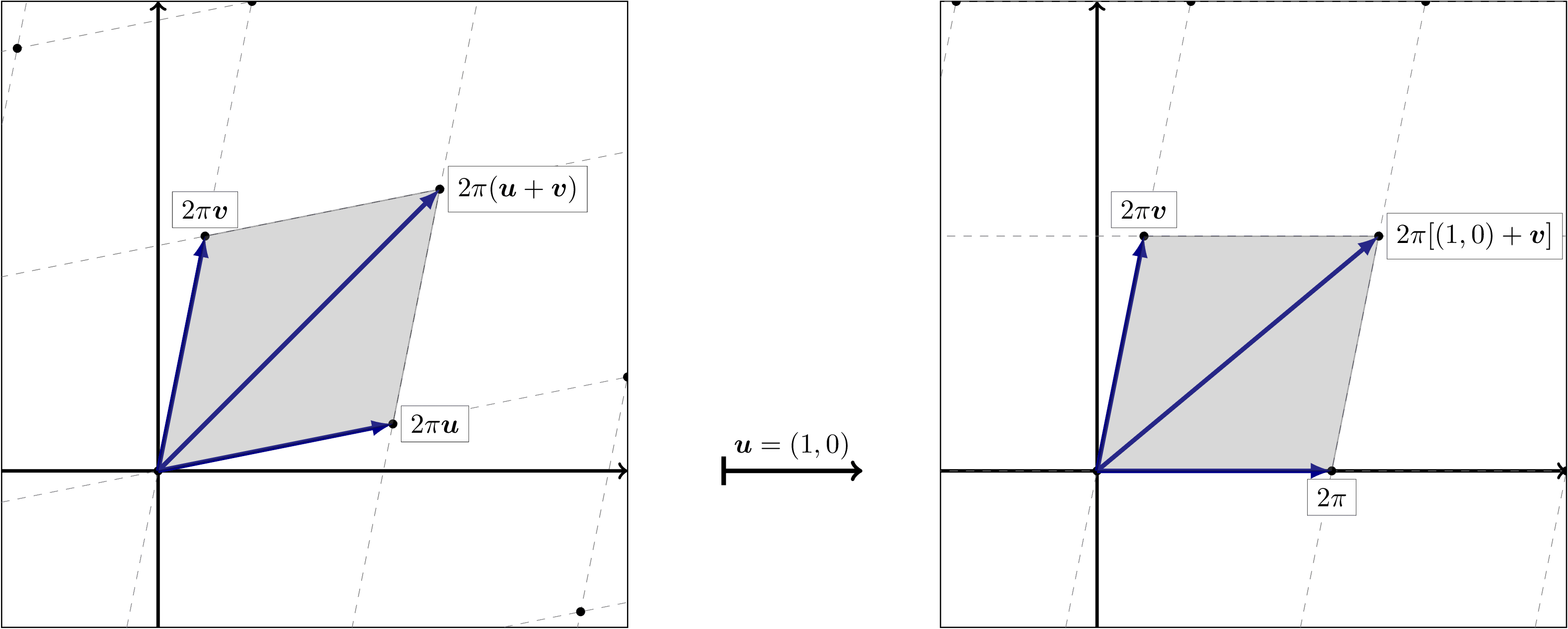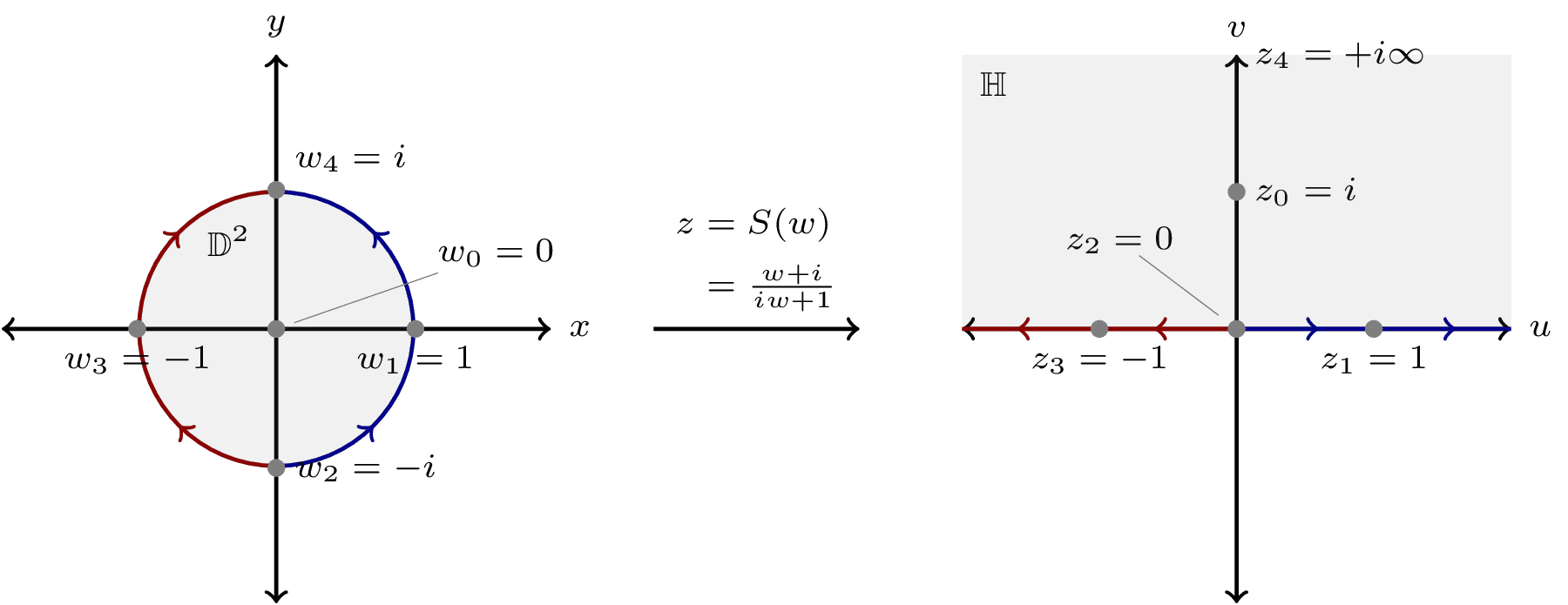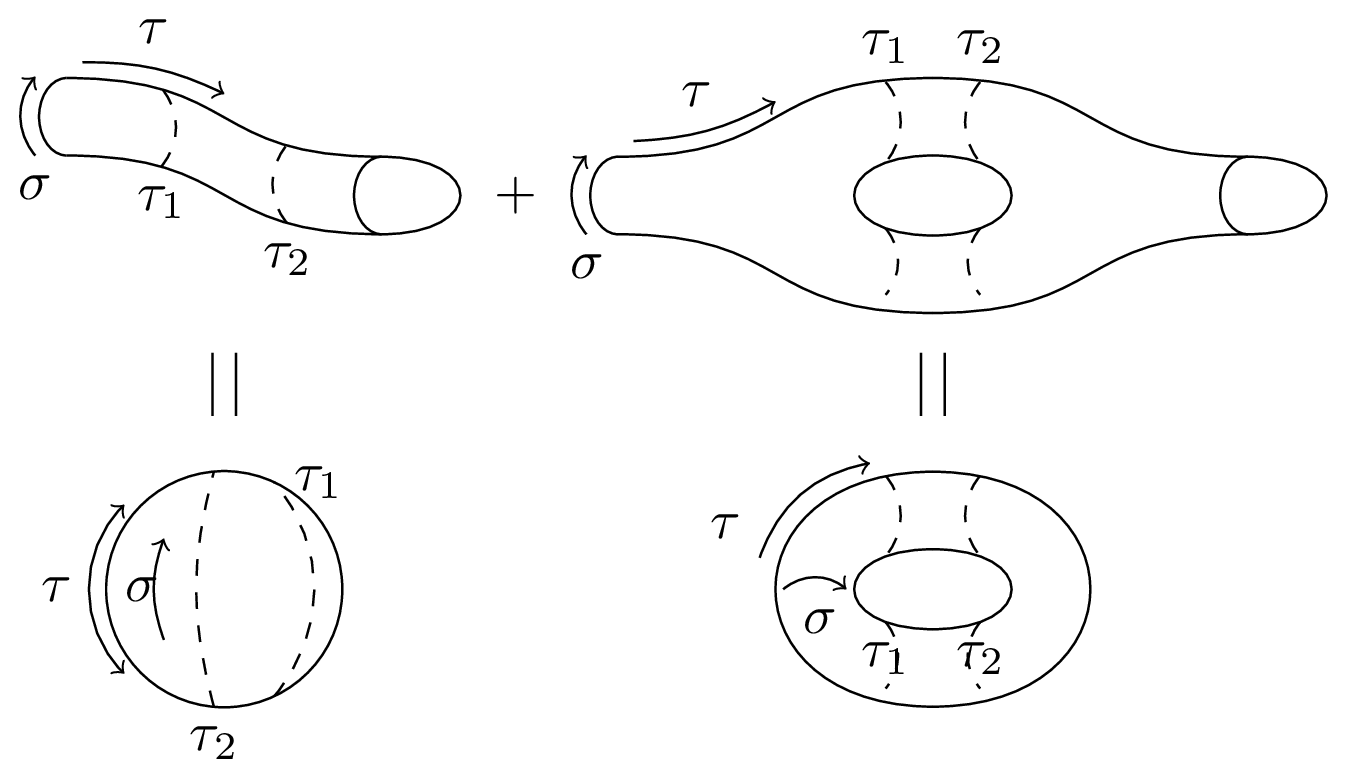Edit and compile if you like:
\documentclass[tikz]{standalone}
\usepackage{amssymb}
\usetikzlibrary{decorations.pathreplacing}
\newcounter{ordering}
\begin{document}
\begin{tikzpicture}[
brc/.style args = {#1/#2}{decorate,decoration={brace,amplitude=5pt,raise=#1,#2},thick},
pics/realline/.style n args = {3}{
code = {\draw [thick] (0,0) node [left=2mm] {\refstepcounter{ordering}\theordering.\label{ord:\theordering}} -- (8,0) node [right=2mm] {$\mathbb{R}$};
\fill[black] (0,0) circle (1mm) node[below=1mm] {$-\infty$}
(3,0) circle (1mm) node[above=9] {$#1$} node[below=1mm] {0}
(5,0) circle (1mm) node[above=9] {$#2$} node[below=1mm] {1}
(8,0) circle (1mm) node[above=9] {$#3$} node[below=1mm] {$\infty$};
\foreach \i [count=\j] in {0,1,2,3,4,5,6,7,8}
\coordinate (-\j) at (\i,0);
}}
]
\matrix (A) [column sep=40,row sep=20] {
\pic (A1) {realline={y_1}{y_2}{y_3}};
\draw[brc=5/] (A1-1) -- node[above=9] {$y_4$} (A1-4);
& \pic (A2) {realline={y_2}{y_1}{y_3}};
\draw[brc=5/] (A2-1) -- node[above=9] {$y_4$} (A2-4);
\\
\pic (A3) {realline={y_1}{y_2}{y_3}};
\draw[brc=5/] (A3-4) -- node[above=9] {$y_4$} (A3-6);
& \pic (A4) {realline={y_2}{y_1}{y_3}};
\draw[brc=5/] (A4-4) -- node[above=9] {$y_4$} (A4-6);
\\
\pic (A5) {realline={y_1}{y_2}{y_3}};
\draw[brc=5/] (A5-6) -- node[above=9] {$y_4$} (A5-9);
& \pic (A6) {realline={y_2}{y_1}{y_3}};
\draw[brc=5/] (A6-6) -- node[above=9] {$y_4$} (A6-9);
\\
};
\end{tikzpicture}
\end{document}
Click to download: operator-orderings.tex
Open in Overleaf: operator-orderings.tex
This file is available on tikz.netlify.app and on GitHub and is MIT licensed.
See more on the author page of Janosh Riebesell..









